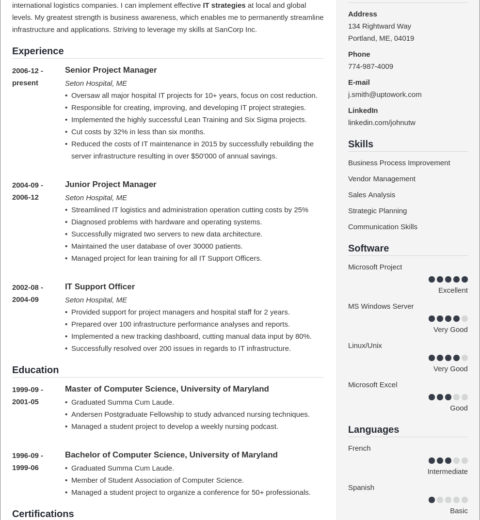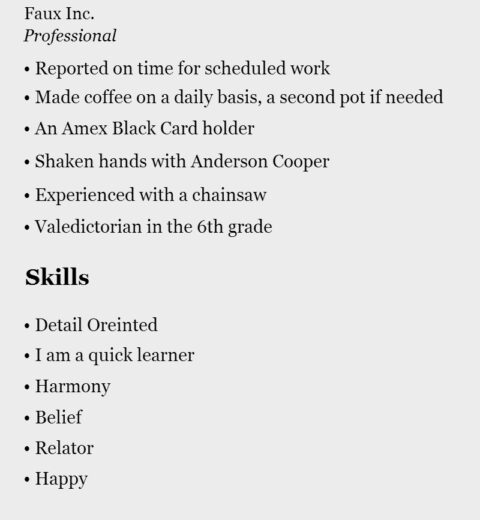The objective section of a resume is a crucial component that garners significant attention from hiring managers. It serves as a succinct introduction that summarizes your career intentions and demonstrates your alignment with the prospective employer’s goals. However, there is often a prevailing ambiguity surrounding what exactly should be included in this section. Observations reveal that many applicants fail to capitalize on this opportunity, either by being overly generic or by missing the mark entirely. This article will dissect the essential elements that should constitute a compelling resume objective, complemented by illustrative examples.
To commence, it’s imperative to recognize the primary purpose of an objective statement. Unlike the rest of the resume, which details your experience and skills, the objective acts as a lens through which potential employers can view your aspirations and how they correspond to their needs. This is not merely a space to outline what you want; it should reflect a symbiotic relationship between your career objectives and the company’s mission. As such, crafting a pertinent and tailored objective can resonate more profoundly with recruiters, consequently elevating your candidacy.
When conceptualizing the objective, you must focus on several key components:
1. Specificity: Your objective should not be a blanket statement. Instead, it should reference the particular position you are aiming for. For example, a general statement such as “I am seeking a challenging role” is far less impactful than, “I am seeking a marketing coordinator position where I can leverage my expertise in digital campaigns to foster brand awareness.” The former lacks context, while the latter is specific, showcasing an understanding of the role.
2. Skills and Qualifications: This is your opportunity to showcase your most relevant skills. A skill that links directly to the job posting can be a focal point of your objective. For instance, “Aspiring software engineer with expertise in Python and a strong foundation in algorithms, seeking to contribute to innovative projects at XYZ Corp.” This dual emphasis on skills and aspiration demonstrates both capability and enthusiasm.
3. Company Alignment: Demonstrating knowledge of the organization can set you apart from other candidates. Reference the company’s values or goals to indicate a cultural fit. For example, “Dedicated educator with a passion for inclusivity and differentiated instruction, eager to join ABC School’s mission to foster an equitable learning environment.” Such specificity enhances your objective’s resonance.
4. Career Goals: Reflect on how the position aligns with your long-term aspirations. Prospective employers are intrigued by candidates who demonstrate a clear career trajectory. A compelling example might be, “Results-driven sales associate seeking to advance to a managerial role within three years at DEF Inc., leveraging strong negotiation skills and customer relationships.” This notifies recruiters that you have a vision for your future while illustrating your readiness for growth.
Having identified these components, let’s delve into tangible examples for various professional contexts:
Entry-Level Position: “Enthusiastic recent graduate with a Bachelor of Arts in Communication, aspiring to secure an entry-level public relations role at GHI Agency, leveraging strong writing and interpersonal skills to contribute to effective media strategies.” This example encapsulates the candidate’s recent academic achievements while delineating a clear career objective.
Experienced Professional: “Strategic financial analyst with over five years of experience in data analytics and risk assessment, seeking to leverage expertise at JKL Corp., aiming to optimize investment strategies and enhance profitability.” This revision demonstrates robust experience and a clear alignment with the company’s objectives.
Career Changer: “Detail-oriented project manager transitioning from the construction industry to IT project management, eager to apply leadership and organizational skills to guide software development teams at MNO Inc.” This example acknowledges the previous career while illustrating the relevance of transferable skills, showcasing adaptability and ambition.
While crafting your objective, it is crucial to maintain brevity. A well-designed objective should generally be one or two sentences long, avoiding rambling which might dilute your message. Additionally, remember that clarity is essential; use straightforward language without excessive jargon. Too much complexity may obscure your intent, leaving recruiters more confused than impressed.
This section of your resume should also be tailored for each application. It’s not sufficient to create one objective and apply it universally. Take the time to scrutinize each job description and adjust your objective to reflect that specific context. This level of detail serves not only to demonstrate your diligence but also your genuine interest in the role.
In conclusion, the objective part of a resume can be a potent tool in propelling your candidacy forward. By emphasizing specificity, relevance, skills, and alignment with the company’s mission, you can mesmerize hiring managers and demonstrate your suitability for the role. Each objective should be painstakingly tailored to underscore your aspirations while resonating with the company’s values. When done correctly, it transitions from being merely a statement of intent to a strategic declaration that encapsulates your professional identity. A compelling objective can set you apart in a crowded job market, illuminating your path toward success.




